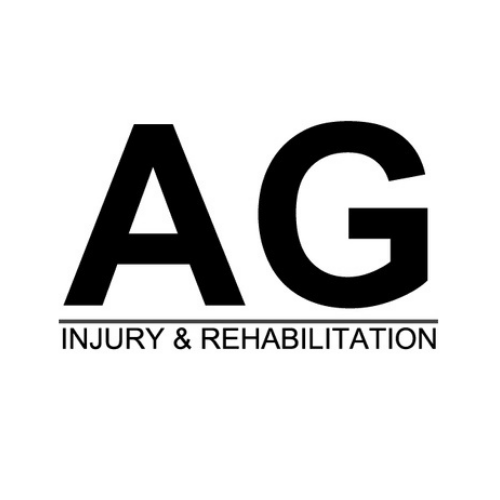Hurting yourself is frustrating, especially if it's an injury that will keep you out of action for a while. So it's important to follow a few steps to help get the recovery process going, so you are "injured" for as little time as possible. No matter if it's a minor injury or something more major, the quicker you can get over it and return to full fitness (while reducing pain as much as possible), the better.
I'll share below the things I advise my patients to do straight away, even if I can't see or help them for a while. So follow my tips if you find yourself injured any time soon. First, lets discuss what actually happens straight away so you can better understand why and what you should do.
What happens when you get injured?
When you sustain an injury, the body initiates a complex and highly orchestrated response to mitigate damage and kickstart the healing process. Let's delve into the distinct scenarios of sprains, strains, fractures, and other related injuries. In the case of a sprain, which involves the stretching or tearing of ligaments connecting bones, the body responds with inflammation. Blood vessels dilate, allowing immune cells to rush to the site, and the injured area swells as a result of increased fluid and white blood cells. This inflammatory phase aims to protect the injured area and initiate tissue repair. Strains, affecting muscles or tendons, undergo a similar process. Fractures, or broken bones, trigger not only inflammation but also the activation of specialized cells that begin forming a callus to stabilize the fracture site. The body, in its wisdom, orchestrates a meticulous dance of cell signaling, involving growth factors and immune cells, to mend the damaged tissues. Pain, redness, and warmth at the injury site are common signs of this initial phase. As time progresses, the reparative phase follows, involving the production of collagen and the rebuilding of tissues. Each injury type has its nuances, but the body's response remains a testament to its remarkable ability to heal and restore functionality.
5 Steps to take when you injure yourself
Taking prompt and appropriate steps when injured can significantly contribute to a faster healing process. Here are five crucial steps to consider:
1. R.I.C.E Method
Immediately after sustaining an injury, employ the R.I.C.E method — Rest, Ice, Compression, and Elevation. Rest the injured area to prevent further damage, apply ice to reduce swelling and numb pain, use compression (like a bandage) to control swelling, and elevate the injured limb to minimize fluid buildup.
2. Pain Management
Utilize over-the-counter pain relievers, such as acetaminophen or ibuprofen, to manage pain and inflammation. Follow the recommended dosage and consult with a healthcare professional if you have any concerns or pre-existing conditions.
3. Seek Medical Attention
If the injury is severe, doesn't improve with basic first aid, or involves head, neck, or spine, seek immediate medical attention. Fractures, deep cuts, or injuries causing persistent pain may require professional assessment and treatment.
4. Protect and Immobilise
Depending on the type of injury, it's crucial to protect and immobilize the affected area. Splints, slings, or braces can help prevent further damage and promote proper healing. Immobilization reduces strain on injured tissues and supports the body's natural recovery mechanisms.
5. Follow a Rehabilitation Plan
As you progress in healing, follow a rehabilitation plan tailored to your specific injury. This may involve gentle exercises, stretches, or physical therapy to restore strength, flexibility, and function. Adhering to a rehabilitation regimen can prevent long-term issues and optimize recovery.
Remember, individual cases may vary, and consulting with a healthcare professional for personalized advice is essential for proper injury management.
Other important factors in injury recovery
Sleep
Sleep plays a pivotal role in the intricate process of injury recovery. During sleep, the body undergoes crucial physiological and cellular activities that promote healing. Growth hormone, essential for tissue repair and muscle growth, is released in higher quantities during deep sleep stages. Moreover, the immune system becomes more active, addressing inflammation and fighting off potential infections at the injury site. Sleep is also instrumental in regulating cortisol levels, a stress hormone that, when elevated, can impede the healing process. Additionally, the body's energy resources are more effectively allocated during sleep, directing them towards repair and regeneration. Quality sleep not only accelerates physical recovery but also supports mental well-being, reducing stress and anxiety that can hinder the healing process. Establishing good sleep hygiene, such as maintaining a consistent sleep schedule and creating a comfortable sleep environment, becomes a vital aspect of comprehensive injury recovery.
Nutrition & Hydration
Nutrition and hydration play integral roles in the intricate dance of injury recovery. A well-balanced diet provides the body with the essential nutrients needed for cellular repair, immune function, and the synthesis of new tissues. Protein, in particular, is a key player, aiding in the regeneration of damaged muscles, ligaments, and tissues. Vitamins and minerals, such as vitamin C, vitamin D, and calcium, contribute to bone health and overall immune support. Adequate hydration is equally crucial, as it facilitates nutrient transport, helps regulate body temperature, and ensures optimal metabolic function. Water is a fundamental component in the formation of connective tissues, and staying hydrated aids in the prevention of muscle cramps and stiffness. In essence, proper nutrition and hydration create an environment conducive to healing, promoting faster recovery, and reducing the risk of complications during the rehabilitation process. It's a holistic approach that nourishes the body from within, empowering it to bounce back from injuries with resilience.
Exercise
Exercise plays a multifaceted and indispensable role in the journey of injury recovery. While it's essential to tailor exercise regimens to the specific injury and adhere to professional advice, engaging in appropriate physical activity promotes strength, flexibility, and overall functionality. Strategic exercises aid in rebuilding muscle tone, preventing atrophy, and restoring joint mobility. Controlled and targeted movements stimulate blood circulation, facilitating the delivery of oxygen and nutrients to the injured area, which is crucial for optimal healing. Moreover, exercise contributes to the production of endorphins, the body's natural painkillers, fostering a positive mental state that is conducive to the recovery process. However, it's imperative to strike a delicate balance—too much, too soon can exacerbate the injury, while a lack of movement may impede progress. Supervised rehabilitation programs, incorporating gradual and progressive exercises, are often integral to a comprehensive recovery strategy, ensuring that physical activity becomes a healing ally rather than a hindrance.
The next steps towards full recovery
Once you have managed the acute phase of your injury and have diagnosed what it actually is, it's important to follow the correct guidance of recovery. This will vary in the approach and timescales depending on both the injury itself and your goals of recovery. For example, an elderly lady who has suffered back pain while lifting household items would have a very different recovery goal than a premier league footballer with a hamstring injury.
Returning to sport
Regardless, a structured physiotherapy programme will prepare your body to return to the activities you are aiming for. If returning to sport, you should have adequately tested various movements and loads that replicate the sporting demands. Beyond merely alleviating pain and restoring basic functionality, physiotherapy focuses on targeted exercises and interventions that address the specific demands of an individual's chosen sport. Physiotherapists play a crucial role in guiding athletes through a gradual and tailored progression of exercises, aiming to rebuild strength, flexibility, and coordination. This meticulous approach not only ensures a safe return to activity but also mitigates the risk of re-injury. Moreover, physiotherapy encompasses hands-on techniques, such as massage and joint mobilization, which aid in tissue healing and enhance overall performance. The collaborative relationship between athletes and physiotherapists is vital during this phase, as it fosters an understanding of the body's mechanics and empowers individuals with the tools to maintain peak physical condition, ultimately allowing a seamless and confident return to their chosen sport.

